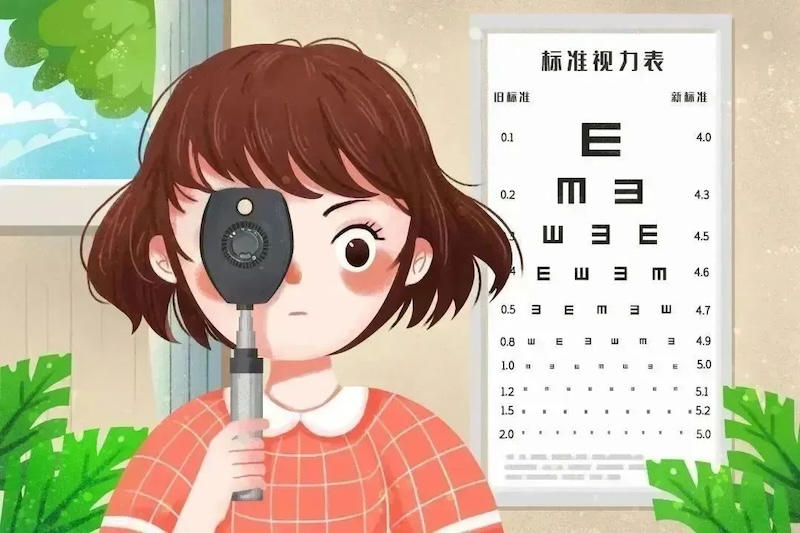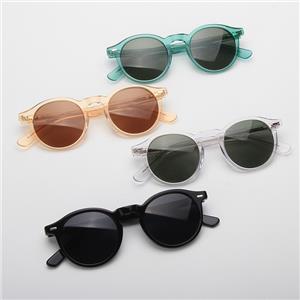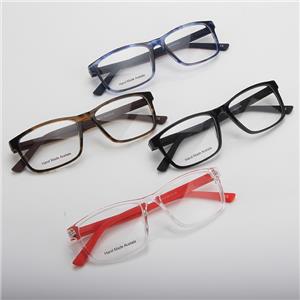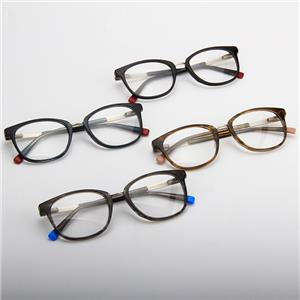So does wearing glasses really make eyes bulge?
So does wearing glasses really make eyes bulge?
Parents often hear that wearing myopia glasses will cause the eyes to bulge more and more.
As a result, some people develop a resistance to myopia glasses, preferring to avoid wearing them when their vision is poor, or only wearing them when attending class or watching TV.

01 Myopia is the real culprit for bulging eyes
The idea that wearing myopia glasses makes eyes bulge is actually a misconception. Bulging eyes are usually caused by excessive myopia, which leads to an elongated eye axis, resulting in bulging of the eyeball. This is more common in patients with extreme myopia.
Myopia can be categorized into two main types based on anatomical structure: axial myopia and refractive myopia. Most cases of myopia are axial myopia, which is caused by rapid axial growth. Most children are born with hyperopia. As they age, their eye axis grows, similar to their height, gradually transitioning from hyperopia to emmetropia. However, if they grow too quickly, they are more likely to develop myopia. Generally speaking, the longer the eye axis, the higher the risk of myopia. During the growth and development period, it's best to keep the axial length of the eye within 0.3 mm per year. By around 18 years of age, children's height development is essentially complete, and their axial length will gradually stabilize. Therefore, the root cause of bulging eyes is the excessive axial length caused by high myopia, not glasses.
Myopia Glasses can change blurry vision to clear vision because the lenses change the convergence of light. Myopia glasses use concave lenses, which diverge light entering the eye and form an image on the retina, allowing the wearer to see clearly. However, the optical effect of concave lenses can cause objects to appear smaller, and this decreases with increasing myopia. From the perspective of others, the eyes of people wearing myopia glasses also appear smaller, giving the appearance of distorted eyes.
In fact, a good pair of glasses not only corrects vision, allowing for clear, comfortable, and long-lasting vision, but can also modify certain "imperfections" in the wearer's eyes and face. On the other hand, if a child with myopia doesn't wear glasses, blurred vision can lead to visual fatigue. Over time, this can cause changes in visual functions such as accommodation and vergence, which can not only worsen myopia but may even lead to strabismus, potentially causing more harm than good. Therefore, if a child has myopia, it's crucial to seek a standardized medical examination and receive a scientifically designed Myopia glasses fitting.
02 What to Consider When Choosing the Right Pair of Myopia Glasses
Fitting and using Myopia glasses is relatively simple, and it's easy to overlook the technical details involved. In reality, choosing the right Myopia glasses is a complex process.
The correct choice of Myopia glasses requires a comprehensive consideration of the lens' optics, aesthetics, and mechanics.
"1. First, accurate eye examinations are essential.
"2. Second, when choosing frames, pay attention to the fit of the bridge to the nose and the temples to the ear.
"3. Finally, and most often overlooked, the lenses must be accurately ground and the optical center must be aligned with the center of the pupil. This means that the pupil distance and pupil height must match. Otherwise, a prismatic effect can occur, leading to visual fatigue.




